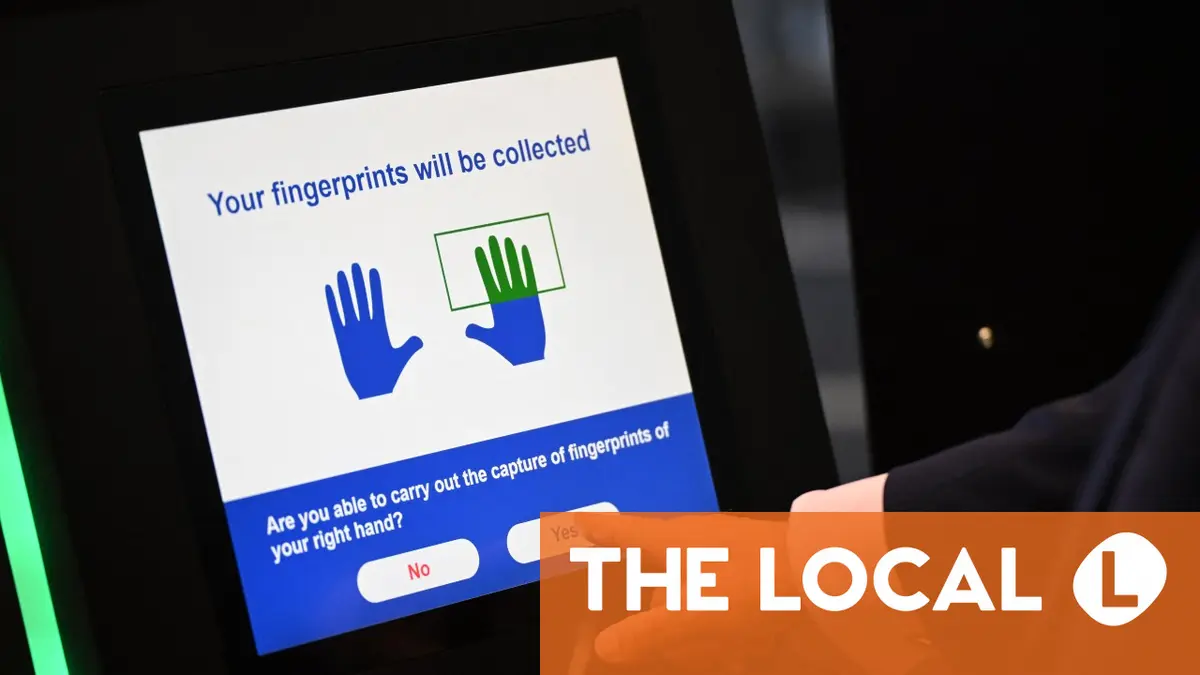Non-EU travellers to Sweden will be able to use a new phone app to reduce the time taken getting through border control when the new Schengen Entry/Exit System comes into force on October 12th. Sweden will initially be the only EU country to have the app up and running.
What is the new Entry/Exit System (EES)?
More than a decade in the making, the EU’s Entry/Exit System is designed to increase security in the Schengen zone by requiring all arrivals from non-EU countries to leave a photograph and fingerprints on arrival in the zone.
“This will be very beneficial when it comes to law enforcement, and not only for border crossings, because the information can be used for other purposes,” Louise Wahlberg, the project manager for the Swedish police implementation of the Entry/Exit System, told The Local.
“If you find fingerprints at a crime scene, at a murder, you can send the fingerprints and see if a person with this fingerprint has been registered in the system.”
Who is affected?
Non-EU citizens who are resident in a country outside the EU will all be required to use the system from the day it comes into force on October 12th.
EU and Schengen citizens will not have to use the new border crossing system, and nor will non-EU citizens who have a residence permit or right of residence (and thus have a residence card) in an EU country. Nor will those on long stay visas. Anyone on a short stay visa, such as a Schengen visa, will have to go through the EES checks however.
Advertisement
What is the phone app?
The app, which has been built by the EU’s Frontex border agency with the help of Swedish programmers on secondment, will allow non-EU citizens to upload photographs of their passport and also take a selfie, to reduce the delay caused by the new Entry/Exit System.
Under the EES system, most non-citizens of the EU will have to register their biometric information at special kiosks at the border, having their faces photographed and fingerprints and passports scanned, before they can enter the EU’s Schengen area.
“It will make the process a little bit more effective, so we can save time in the process because of this, Wahlberg said. “It’s not mandatory. It’s up to the passengers if they want to use it.”
How do you download the app?
The app is expected to be available for download for free on Google Play and Apple’s App store on October 12th, and travellers tow Sweden can start to use it from that day.
How will the app work?
Travellers enter their details, where they are travelling from, and which airport in the Schengen area they plan to arrive at, and then upload a photograph of their passport and a selfie photograph taken with their phone. These details will then be sent to border control at the airport where they are arriving.
How much time will it save?
Passengers using the app will have their own, dedicated passport queue on arrival at Stockholm Arlanda airport, and possibly also at Göteborg Landvetter airport, potentially saving them considerable queuing time, particularly if, as some fear, the introduction of EES on October 12th causes major delays.
In the long-run, tests carries out by the Swedish border police indicate that the app will save about 15 seconds per passenger.
Which airports in Sweden are equipped to use the app?
As well as Arlanda and Landvetter, the app will also be operational at Stockholm Bromma Airport, Malmö Airport, and Luleå Airport, although the smaller three airports will not have a dedicated queue for app users.
Advertisement
What happens if you can’t or don’t want to use the app?
At least initially, the app will be completely voluntary, so if you don’t have a smartphone or for any other reason don’t want to use it, you can just use the manual EES queue.
Why is Sweden ahead of the other Schengen countries in implementing the app?
Wahlberg said the reason Sweden had been such an enthusiastic proponent of the app, both in its development and now in its execution was that Swedish airports are currently not equipped with e-gates, which might otherwise have sped up the system.
“It’s because we really need to do this: we don’t have the kiosks that you have in other countries. So our main goal was to have this app and to get it into use, so we have been helping Frontex and EU when they were trying to introduce the app. We have been there from the beginning and are supporting them during the implementation stages.”
Wahlberg said that The Netherlands had also played a prominent role in developing the app.
Are airlines helping?
Yes, Wahlberg said that some 30 airlines using Swedish airports had attended a workshop on communicating about the app with passengers, and that several airlines were planning to inform travellers arriving in Sweden from October 12th about how to find the app and how it can smoothen their arrival.
